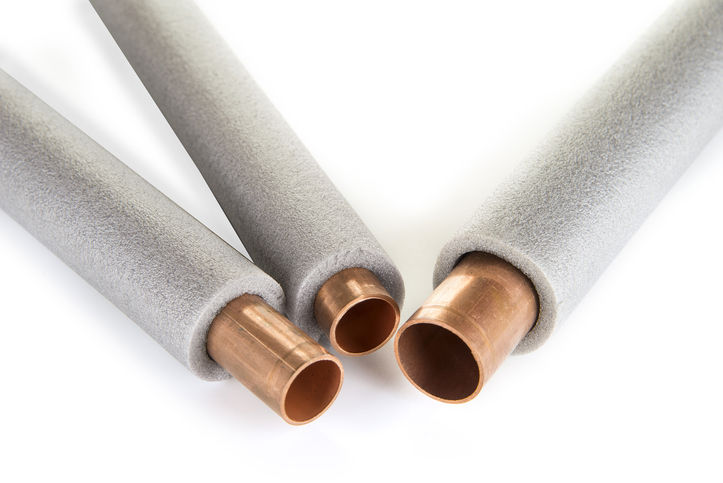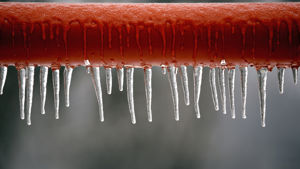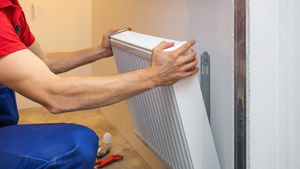With winter set to be as unpredictable as ever, it’s important to get your home prepped as soon as you can. One really crucial job is to prevent frozen pipes, but also understand how to thaw frozen pipes too.
In this article, our heating and DIY expert offers his advice and a warning to households that prevention is paramount to avoid unnecessary damage and costly repairs.
How do frozen pipes occur?
Your water pipes usually have a little water in them even when the taps are not turned on. If this leftover water is present during any quick cold spell that winter throws at us, then it can freeze within the pipe.
This water freezing can first cause a build-up and then ultimately fully freeze your pipes. This is a real concern for any household, leaving you without running water and presenting the very real risk of pipes bursting and flooding your home.
The best thing to do to avoid all this unnecessary damage and repair is to protect your pipes before they freeze. Prevention is key to minimising the stress and worry that a blocked or burst pipe will bring.
While it may not seem like a threat right now, the temperature can drop rapidly and without warning - especially over night when you might not realise it straight away.
Even basic jobs can be much more intense and difficult once temperatures drop and conditions worsen. This job is best completed now during milder weather, providing you with time for troubleshooting, rather than the night before bad weather is due.

5 tips to prevent frozen pipes in winter
We’ve got these top tips to help you prevent any issue with frozen pipes this winter. Plus, keeping reading for advice on how to thaw frozen pipes safely.
1. Insulate pipes and tanks
Perhaps the most vital piece of advice to combat water pipes freezing is to consider insulation for your pipes and tanks.
First, check your pipes for “lagging” which is essentially a built-in insulating layer that lowers your chances of frozen piping, as well as your heating bills. If your pipes already have lagging then that’s great, but if not, we strongly recommend doing it.
You can buy lagging from most DIY stores and fit it yourself, but check the measurements of your pipe and tank first.
If you are pressed for time or on a budget then ensure you focus your efforts on those most exposed stretches of piping running outside or through the unheated areas of your home.
Pipe insulation is usually a sponge like material but also comes as a foam that is clamped around your piping and tank. However, if you need to act quickly then you can consider temporary solutions such as thick towels, duvets or sleeping bags in combination with zip ties. Often these fixes can tide you through a surprise cold spell until you can get a more permanent frozen pipe solution sorted.
2. Run taps regularly
Frozen pipes in winter occur more often when the taps connected have not been used much or at all. Try periodically turning your taps on throughout the home even just for a few seconds to cultivate the flow of water throughout your pipes. If temperatures are expected to drop significantly low overnight and you don’t have adequate insulation fitted, then leaving the water running just a drip can eliminate a freezing pipe in the morning.
3. Open cabinets and lofts periodically
Opening cabinets, cupboards and the loft door enables warm air to circulate into every crevice in your home, reaching hidden kitchen and bathroom pipes. This warming air can help to prevent pipes freezing and also combat damp and mould.
4. Drain your water
If you are concerned about a holiday home or out house that has plumbing but won’t be used during winter, then it’s definitely worth draining your water tank and the resting water out of your pipes.
5. Seal the gaps
You can also pre-empt frozen pipes by sealing up any gaps around pipes where draughts are coming through. This extra weatherproofing is incredibly easy and cheap, and may well prove invaluable.
Of course, keeping your house warm always helps and what better way to do it than with one of these super stylish radiators.
How to thaw frozen pipes
Of course, no amount of preparation is a guarantee against disaster. So here’s some advice for those who are faced with the issue this winter.
If you suspect that your water pipes are frozen, turn on your tap and if you notice that the water pressure is not hitting its usual flow then this could well indicate that you have a frozen pipe. A total lack of water pressure might suggest a ruptured pipe as well as a blockage.
If your pipe has burst, it’s time to turn off the stop cock and get in touch with a professional. If not, then it is quite simple to thaw frozen water pipes.
Follow these steps to thaw frozen pipes.
1. Switch off your water supply
First thing to do is switch off your water supply at the inside stop tap. You do this to prevent pipes from bursting.
2. Turn on the Taps
Then, turn on the cold taps. Do this throughout the home to relieve pressure on your pipes and to drain the system quickly.
3. Apply heat directly
Thawing pipes is a gradual process so try not to find a quick fix that could cause further damage and never use a naked flame or powerful heat source. Applying heat directly to the problem area with a hot water bottle or towels soaked in hot water is the best bet or use the gentle setting on your hair dryer if you can reach the spot.
Now you have the tips to get it done yourself, we hope this helps to prevent any issues during winter. Keeping your house warm has never been more stylish - take a look at our range of stunning designer radiators for a little more punch to your heating.








